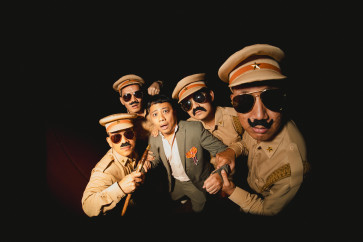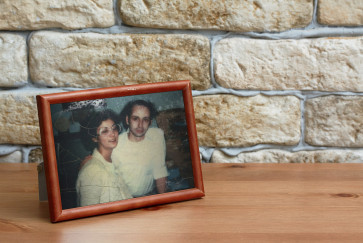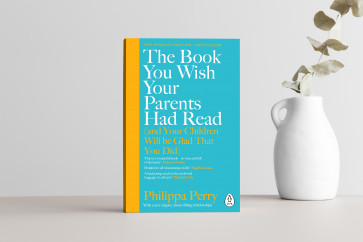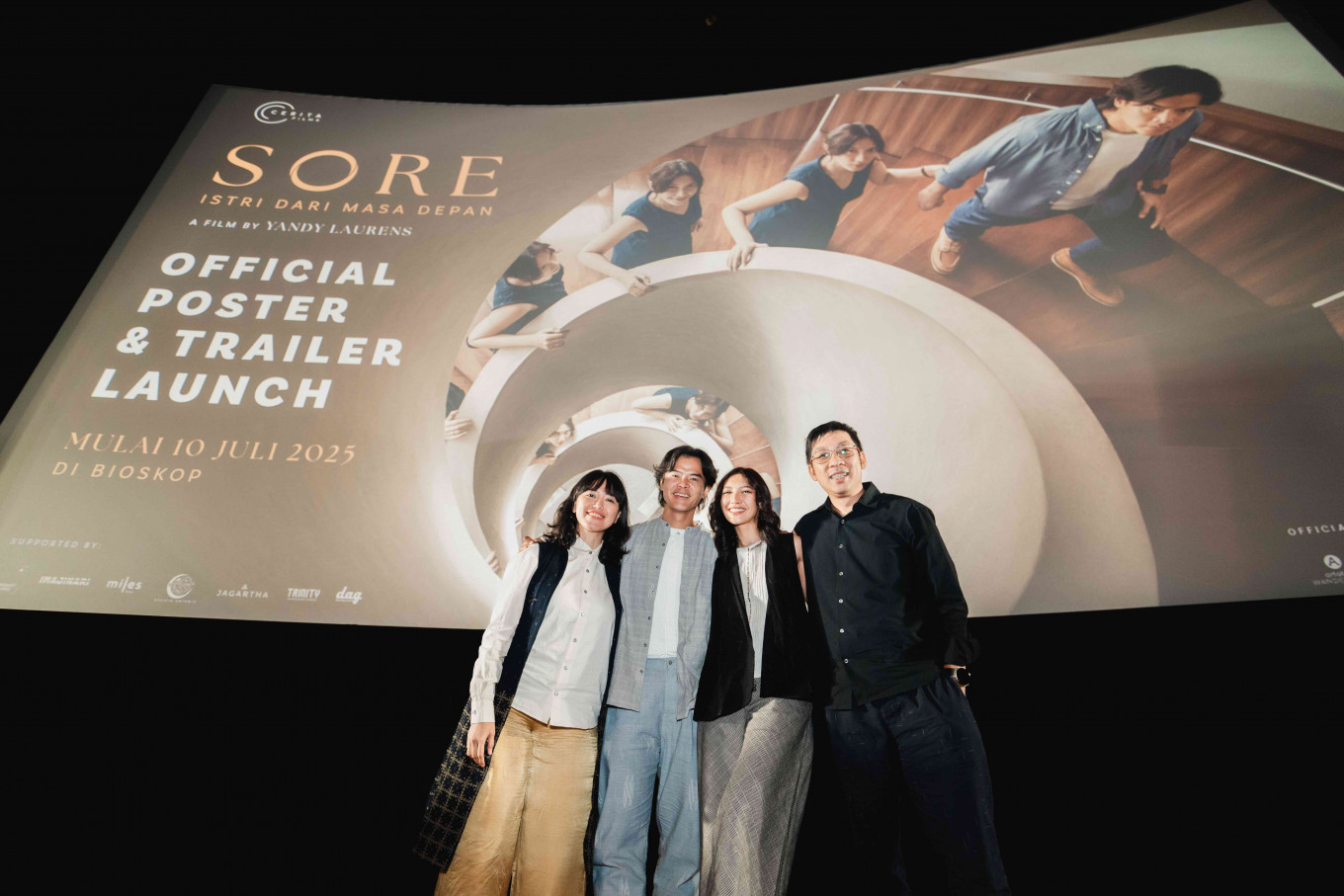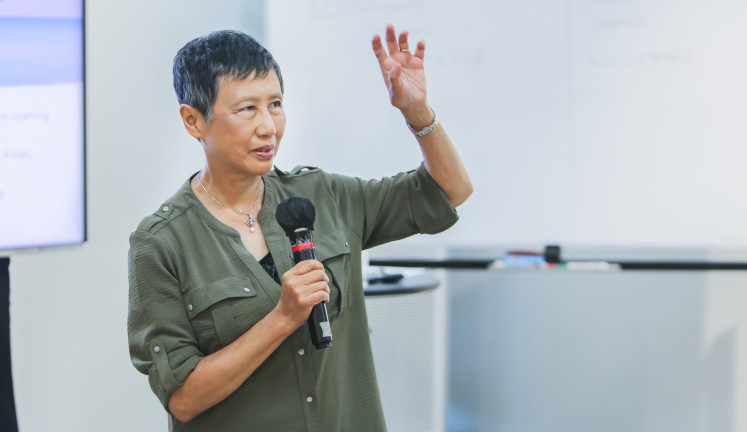Yandy Laurens (right), writer-director of ‘Sore: Istri dari Masa Depan’, poses with (from left) producer Suryana Paramita and actors Dion Wiyoko and Sheila Dara at a press conference to launch the trailer for the feature film on May 23, 2025, at the Epicentrum XXI movie theater in Setiabudi, South Jakarta.
Director Yandy Laurens’s latest offering, Sore: Istri dari Masa Depan (Sore: Wife from the future) has stirring up a wave of emotions among viewers and sparked a viral debate about its ambiguous ending. Starring Sheila Dara and Dion Wiyoko, this genre-defying hit has sold over 2 million tickets since its July 10 premiere.
The twisting and turning film, shorthanded online as Sore Idaman (Dream of Sore), starts as a romance but quietly unravels into something deeper: a sci-fi tragedy cloaked in domestic intimacy.
Here, time plays a leading role alongside Sheila’s Sore and Dion’s Jonathan, where it doesn’t just pass: It rewinds, replays and punishes.
The plot follows Sore, a grieving widow whose husband Jonathan has died of a sudden heart attack. In the wake of his death, she discovers a mysterious arctic zone where time doesn’t flow linearly. So she uses it to go back: first to prevent his death, and then to buy them more time.
But what begins as a time-travel romance quickly spirals into an existential time loop.
At its heart, Sore isn’t just about time travel or personal loss; it’s about the emotional gravity of love, grief and choice. In this world, love isn’t about rewriting fate. It’s about making the same choice again and again, even when you already know how it ends.
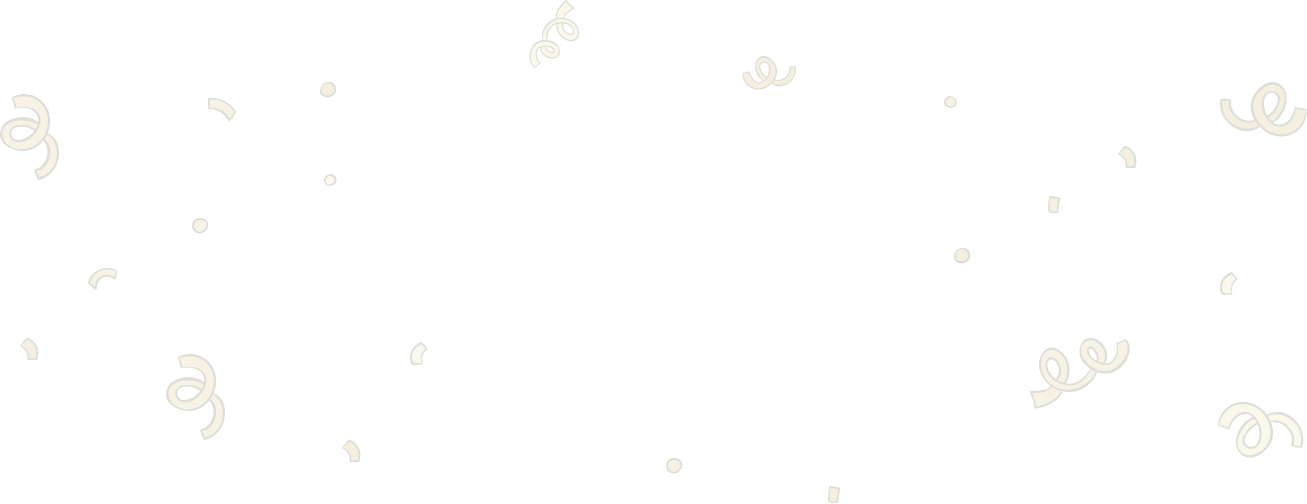
Thank you!
For signing up to our newsletter.
Please check your email for your newsletter subscription.
In Yandy’s vision, time isn’t a mechanical plot device. By portraying time as something profoundly emotional – unruly, personal and cruel in its repetition – he invites us to reflect not only on the structure of time but on the timelessness of longing and connection.
I’ve watched Sore four times, and the ache has sharpened with each viewing.
To understand the ending and why it haunts so many, we have to start with how the story unfolds, through three shifting perspectives.
A word of warning: Spoilers ahead.
Jonathan: Time slows
The story opens from Jonathan’s perspective. A day after photographing the Arctic, he returns home to Croatia to find a strange woman waiting for him. She claims to be his wife from the future.
We know nothing about her yet. From here, the camera lingers. The pacing is slow, the dialogue long, the silence stretched. It demands patience.
Sore eases into Jonathan’s life. She repurposes his oversized shirts into skirts, cooks from memory and comforts without explanation. We aren’t sure if we should believe her, but when she predicts accidents and recites his future milestones, we begin to trust her, just as he does.
Then the illusion cracks. She catches Jonathan smoking in secret. Furious, she yells that he’s going to die. Her nose starts to bleed. She collapses.
When Sore wakes up, everything resets, and all is eerily familiar.
The loop has begun.
Sore: Not enough time
Time loop movies aren’t new. Groundhog Day gave us one of the best as we follow Phil Connors (Bill Murray) learning and growing to become a better man as he relives a single day.
Phil experiments, learns new skills, goes on a date and even decides to end it all at one point. But each reset pushes him toward further growth. Ultimately he transforms, becoming less selfish and more compassionate.
Sore experiments too, but with none of the payoff. With each reset, she tries to “fix” Jonathan, encouraging him to live better and healthier. But nothing changes. He keeps drinking and smoking, and it all ends the same. She starts over, again and again. It feels endless.
Where Groundhog Day feels playful and redemptive, Sore is exhausting by design.
The second act shifts visually with montages, jump cuts and compressed edits. But emotionally, we’re stuck. The repetition feels oppressive. Yandy takes a risk here by leaving us feeling claustrophobic.
We’re trapped as we experience Sore’s heartbreak on repeat, from the inside. And Sheila portrays her character’s exhaustion so well, we physically feel her pain.
Still, Sore persists. Because isn’t that what we do when we love someone? We give them time, hoping that’s enough.
But it isn’t. Because change, real change, can’t be forced.
Eventually Sore realizes Jonathan needs to make peace with his past, and it finally feels like the loop is about to break. But just when she’s close enough for her happy ending, time changes the rules. The loops shorten, the days collapse and she loses control.
Enter the third act. Time isn’t a tool anymore: It’s the antagonist.
Nonlinear time
Now, time is no longer logical. It doesn’t feel fast or slow; it simply unravels.
The loops grow harsher. Sore’s collapses come sooner. The resets happen before she can finish her mission.
Sore’s no longer in control, but maybe she never was.
In one scene she says, “He is mad,” referring to time itself.
But time is a concept created by humans to differentiate the past, present and future. We perceive time as linear. In physics, it isn’t.
According to Einstein’s theory of general relativity, time doesn’t always move forward at the same speed. In extreme situations, such as near a black hole or when moving close to the speed of light, it behaves in nonlinear ways. There is no clear boundary between past and future.
Sore embraces Jonathan in one of the loops, unwilling to let go of the love she has already lost. (Photo courtesy of POPLICIST and Cerita Films)
Without giving away the ending, let’s just say that Sore left me feeling that I’d like to believe love can bend time, too.
While Jonathan sees Sore as part of his past, she sees him as her future. Their choice to be together, no matter what the future holds, is an act of freedom.
And maybe that’s the point. Love isn’t about defying fate, but about choosing it anyway.
So why are we still asking what the ending means? The film has no ending. Just like time, it loops, and in every loop, Jonathan and Sore keep choosing each other.
And that, for me, is enough. Even to watch the movie four times.






